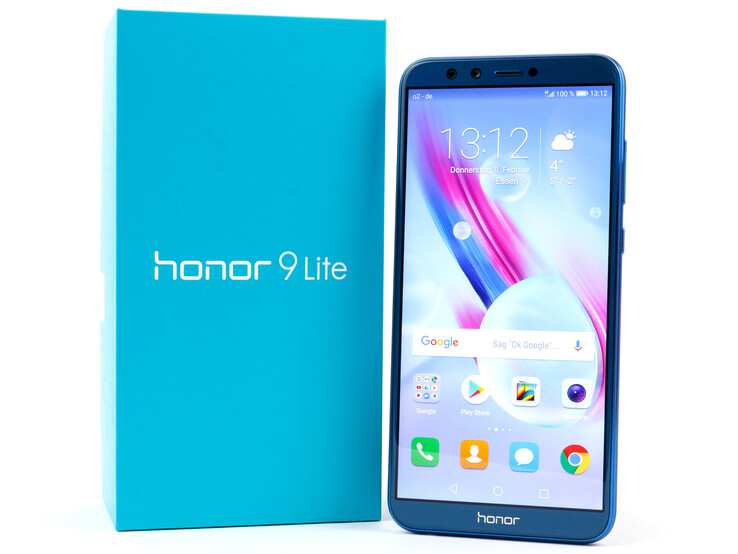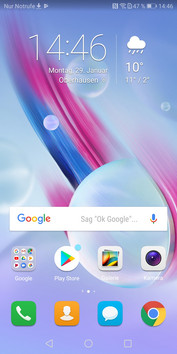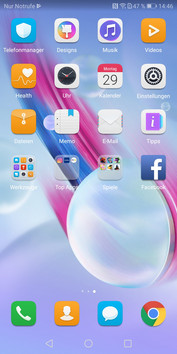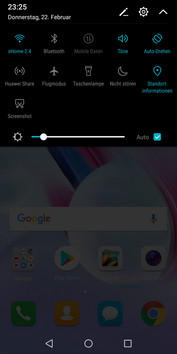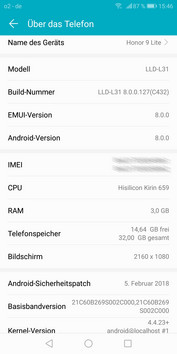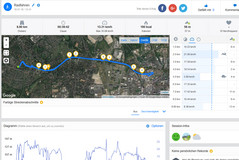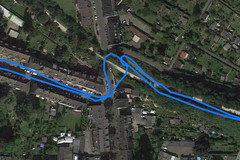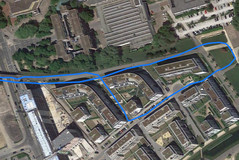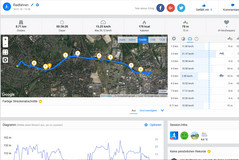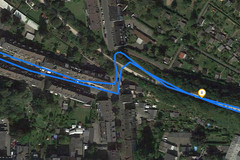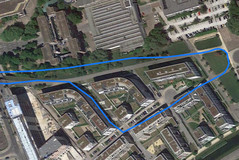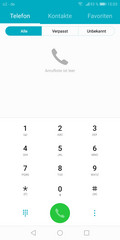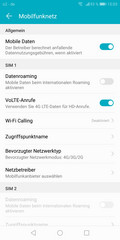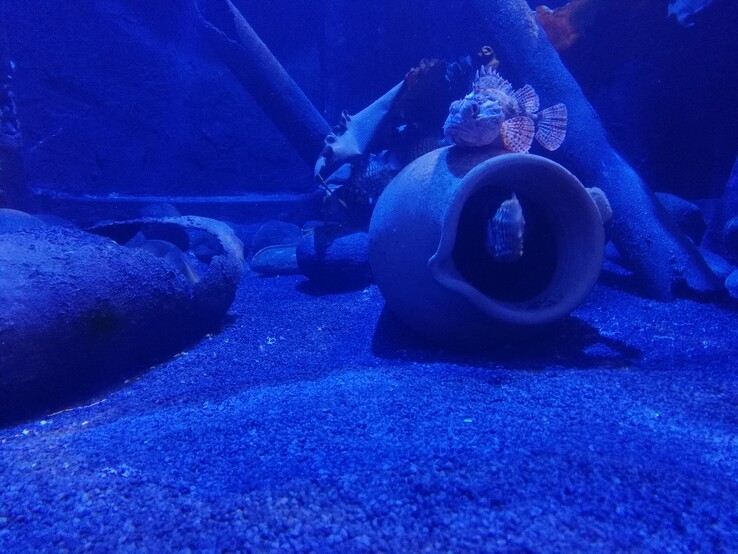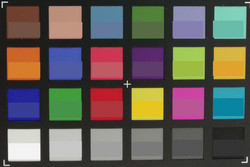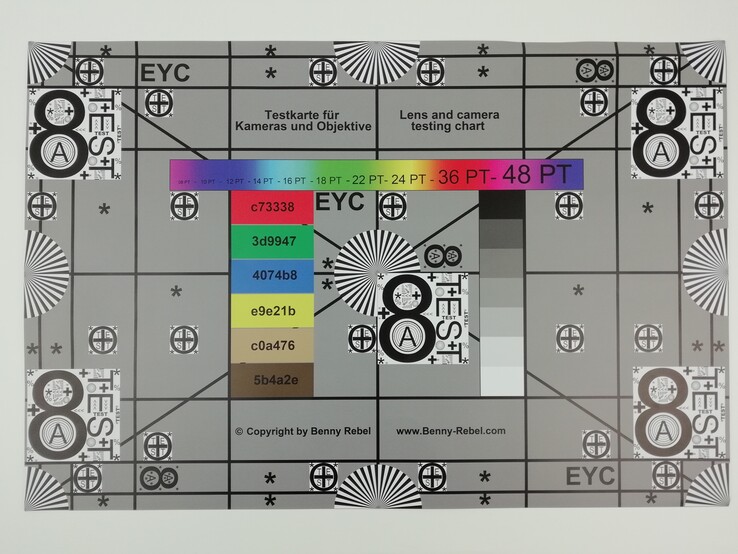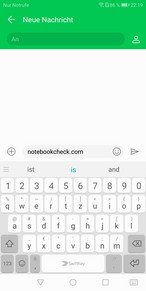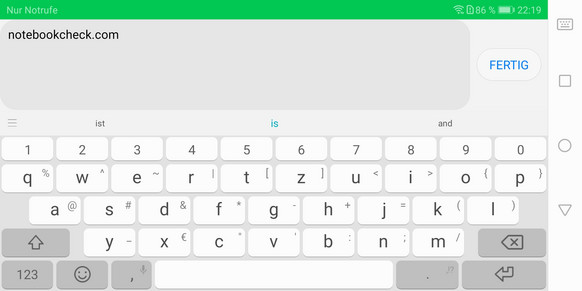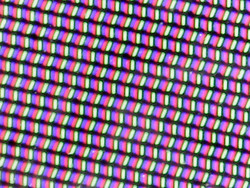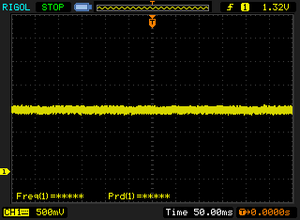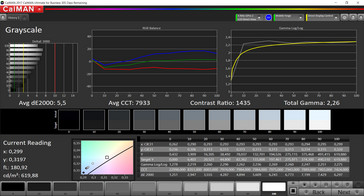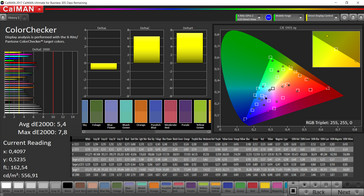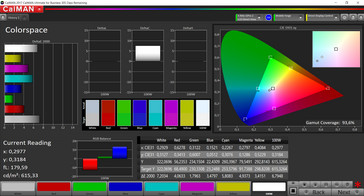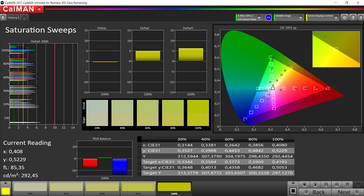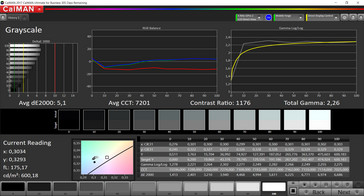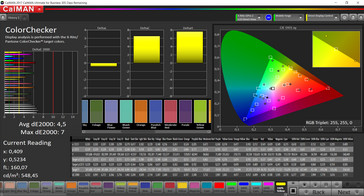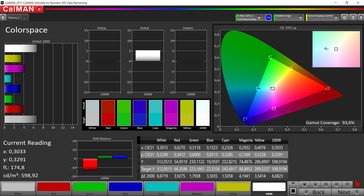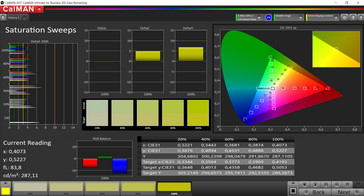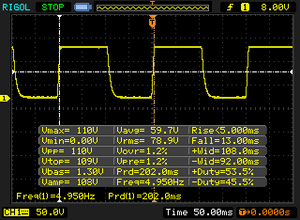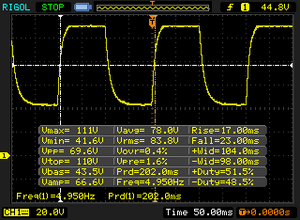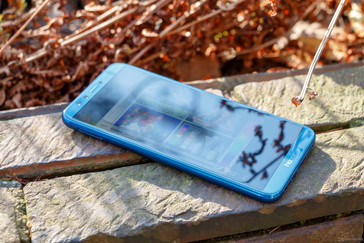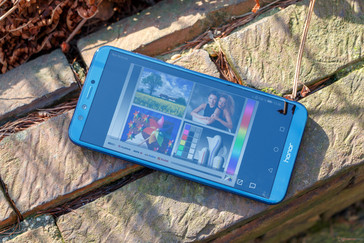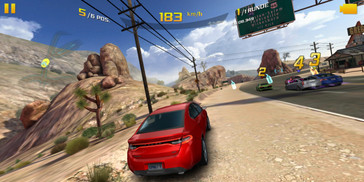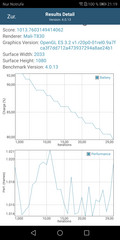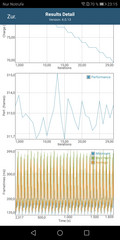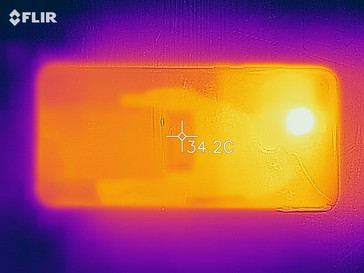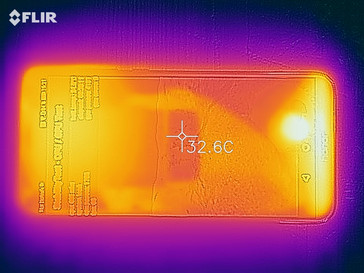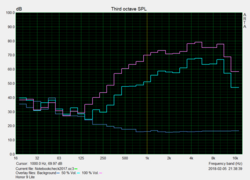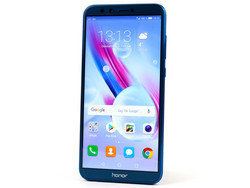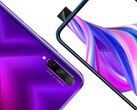Honor 9 Lite Smartphone Review
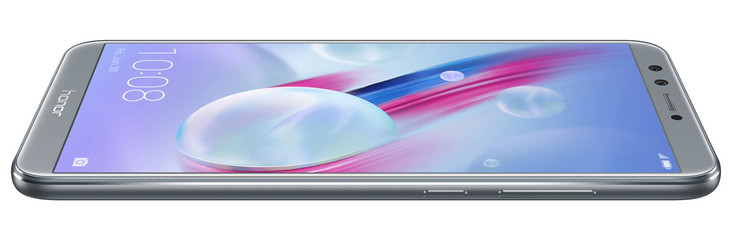
On paper, the Honor 9 Lite (LLD-L31) looks very similar to the Huawei P smart. But the differences are not just on the outside. Our test unit also features a dual camera at the front and is a little cheaper. The case is made of glass and plastic.
The Honor 9 Lite is powered by a Kirin 659, which can also be found in more expensive devices such as the Honor 7X or the Mate 10 Lite. It also has 3 GB of RAM and 32 GB of internal storage available. The latter can be expanded via a microSD card. The battery is nicely dimensioned for this price range and has a capacity of 3000 mAh. The Honor can be purchased for $290.
Competition is high in this price range and the Honor 9 Lite will have to face the Samsung Galaxy J5, the Nokia 6, the Moto G5s, the BQ Aquaris X, the Blade V8 and the P10 Lite, whose price has dropped by now.
Case - a good-looking Honor smartphone
The Honor 9 is available in blue, gray and black. The manufacturer claims a thickness of 7.6 mm (~0.299 in); we measured even slimmer 7.45 mm (~0.293 in). The camera stands out by 0.6 mm (~0.32 in). While the front and back of the case is made of glass, the frame is plastic in a metal look. The back is so reflective that the blue version can actually be used as a real mirror. The surface is accordingly susceptible to fingerprints, but these are easy to wipe off again.
The smartphone is nicely warp resistant and does not creak when trying to twist it. However, the display responds to slightly stronger pressure by creating waves. The gap dimensions are small and uniform. The Honor 9 Lite does not have an IP certification for dust or water resistance.
Connectivity - NFC and FM radio
Unfortunately, the Honor 9 Lite is still equipped with a Micro-USB port instead of the newer Type-C build. The transmission standard follows version 2.0 and supports OTG, which means that external storage devices and peripheral devices can be connected to the smartphone.
The microSD card slot is said to support cards with up to 256 GB, the SDXC standard. This means that even larger memory cards could be compatible with the smartphone. Unfortunately, the card cannot be formatted as an internal storage and apps cannot be stored on it.
Aside from Bluetooth 4.2 and NFC, the device also includes an FM radio receiver, which can be used to listen to the radio when combined with the headset.
Software - the Honor 9 Lite comes with Android 8.0
The Honor 9 Lite comes with Google Android 8.0 Oreo and Huawei's EMUI 8.0. At the time of testing, the security patches are dated February 5, 2018, so they are quite up-to-date. The interface is like that of the other Honor and Huawei smartphones that are equipped with the same UI version.
Unfortunately, Honor has preinstalled a few apps. These include six games, Facebook, Instagram, Booking.com and the eBay app, but can all be easily uninstalled again. Unnecessary Google applications can only be deactivated, not removed entirely. User Account Control is not available.
Communication - slow Wi-Fi vs. fast LTE
The Honor 9 Lite can use the IEEE 802.11 standards b/g/n in your home Wi-Fi network, which means that it only supports the 2.4-GHz band. It is the only model of our set of comparable devices (except for its sibling model, the Huawei P smart) that does not support the 5.0-GHz band. Although the transfer rates to our reference router Linksys EA8500 are on the expected level and are stable, and the Honor 9 Lite also offers a decent range, these results are weak compared to its competition.
Instead, the Honor 9 Lite can theoretically reach high transfer rates with LTE Cat. 13, which enables downloads of up to 400 MBit/s and uploads of up to 150 MBit/s. The frequency range is standard and offers the necessary frequencies for Europe but not much more. Reception was good in our test.
| Networking | |
| iperf3 transmit AX12 | |
| Samsung Galaxy J5 (2017) Duos | |
| BQ Aquaris X | |
| Nokia 6 | |
| Motorola Moto G5s | |
| Huawei P smart | |
| Honor 9 Lite | |
| iperf3 receive AX12 | |
| BQ Aquaris X | |
| Samsung Galaxy J5 (2017) Duos | |
| Motorola Moto G5s | |
| Nokia 6 | |
| Honor 9 Lite | |
| Huawei P smart | |
GPS - the 9 Lite offers reliable positioning
The Honor 9 Lite uses the satellite networks GPS, GLONASS and BeiDou for positioning. It took two seconds to localize us outdoors and was decently accurate within eight meters (~26 ft). Indoors, the accuracy drops to 23 meters (~75 ft), but localization still works.
In order to test the device's everyday localization abilities, we took the 9 Lite on a bike ride together with the Garmin Edge 500. The smartphone actually traced our tracks better when passing under the bridge, but was less exact at the turning point. Overall, the Honor 9 Lite did a good job and is suitable for simple navigation.
Call and Voice Quality
The Honor 9 Lite uses the EMUI 8 telephone app, which has only minor differences to Google's standard app.
The smartphone's call quality is very decent. When held to our ear, both sides could hear one another well, and the speaker phone also gave us a good impression, although the call partner then had a slight echo and appeared more muffled. The 9 Lite also supports voice over LTE (VoLTE) and telephone calls via Wi-Fi (Wi-Fi Calling), as long as your provider allows these features.
Cameras - the 9 Lite has a good dual cam for selfies
Both the front and the back are equipped with the same dual camera with a 13-MP sensor, which is supported by a second 2-MP lens for Bokeh photos and is supposed to create a nice-looking fuzzy-background effect. In reality, there is a difference between the cameras as the front camera can only use fixed focus, but is faster with an aperture of f/2.0, while the back camera has an aperture of f/2.2.
The pictures taken with the front camera are very nice and quite suitable for selfies. Unlike its sibling model, the Huawei P smart, the dual camera also enables portrait photos with depth of focus. Even without the Bokeh effect, we prefer the selfies taken with the Honor 9 Lite. The colors and illumination are on a similar level to the P smart camera, but sharpness is a little better. Portrait mode also works nicely and recognizes the subject well; more expensive smartphones have shown worse results.
The main camera of the test unit takes good photos in daylight and has a decent shutter lag. Particularly when shooting photos with backlight, the lens has a good dynamic range and allows for a lot better pictures than other competitors such as the Galaxy J5. The quality drops significantly in low light and the photos appear weak, unsharp and grainy.
Both cameras can record videos in Full HD.
Front camera: Honor 9 Lite, Honor 9 Lite in portrait mode, Huawei P smart
We also took a closer look at the Honor 9 Lite's camera performance under controlled lighting conditions. The smartphone's color display is a little too light for us, and yellow and cyan in particular are way too pale.
Our test chart confirms our impression: The color areas are too light. The sharpness is decent in the center of the photo, but small details are lost. While the edges remain sharp, there is visible image noise.
Accessories and Warranty
The scope of delivery of the Honor 9 Lite includes a modular power supply, a USB cable, in-ear headphones and a transparent silicone case. The manufacturer does not offer any accessories specific to the Honor 9 Lite on its website, but you can purchase a bundle offer which includes a 64-GB memory card with the device.
The warranty lasts 24 months. Please see our Guarantees, Return Policies and Warranties FAQ for country-specific information.
Input Devices & Handling - the 9 Lite and its fast fingerprint reader
The capacitive touchscreen of the Honor 9 Lite supports up to 10-point gestures and its surface is quite suitable for gliding. Inputs are registered quickly and reliably from any point on the screen. The manufacturer has chosen SwiftKey as its keyboard app, but this can be replaced by any app available on the Google Play store. You can feel strong vibrations when typing.
The one hand mode, which we are already familiar with from other devices, is available again in the 9 Lite. To enable this mode, you simply have to slide your finger over the navigation bar to shrink the screen. The Android navigation bar can also be adapted to your personal needs.
The fingerprint reader on the back of the smartphone works quickly and reliably as well. After unlocking, users reach the home screen immediately. The reader can also be used for answering and ending telephone calls, stopping the alarm, as shutter release, to scroll through the gallery or to pull down the notification bar.
Display - oversaturated, but very bright
The Honor 9 Lite, like the Huawei P smart, is equipped with a 5.65-inch IPS display with a 2:1 aspect ratio. The resolution of 2160x1080 pixels is more than sufficient and equates in 427 PPI, which means that the content appears very sharp.
The brightness of the display is really high and reaches an average of 622 cd/m², but brightness distribution could be a little better. This is not an issue in everyday use, however. The full luminosity can be reached both in manual mode and through the automatic brightness sensor. It only dropped slightly when we measured the even distribution of bright and dark areas (APL50) and only reached 591 cd/m² in the display center.
We noticed the same thing happening with the black value. With an all-black image, the black value is at 0.41 cd/m², but it is slightly higher (0.44 cd/m²) during our APL50 measurement. This means that the contrast ratio also drops during APL50 and lies at 1343:1, which is still a good value. The black value is also decent, particularly in combination with the high maximum brightness. We did not notice any clouding on our test unit and the manufacturer has luckily refrained from using pulse-width modulation for regulating the display brightness. The minimum luminosity (4.22 cd/m²) is also comparably low, which means that the 9 Lite is well suited to reading in the evening, particularly with the "eye comfort" mode turned on.
| |||||||||||||||||||||||||
Brightness Distribution: 82 %
Center on Battery: 627 cd/m²
Contrast: 1529:1 (Black: 0.41 cd/m²)
ΔE ColorChecker Calman: 4.5 | ∀{0.5-29.43 Ø4.78}
ΔE Greyscale Calman: 5.1 | ∀{0.09-98 Ø5}
Gamma: 2.26
CCT: 7201 K
| Honor 9 Lite IPS, 2160x1080, 5.7" | Huawei P smart IPS, 2160x1080, 5.7" | BQ Aquaris X LTPS IPS , 1920x1080, 5.2" | Nokia 6 IPS, 1920x1080, 5.5" | Samsung Galaxy J5 (2017) Duos Super AMOLED, 1280x720, 5.2" | ZTE Blade V8 IPS, 1920x1080, 5.2" | Huawei P10 Lite IPS, 1920x1080, 5.2" | Motorola Moto G5s IPS, 1920x1080, 5.2" | |
|---|---|---|---|---|---|---|---|---|
| Screen | -10% | -12% | -20% | 4% | -14% | -10% | -11% | |
| Brightness middle (cd/m²) | 627 | 573 -9% | 675 8% | 512 -18% | 448 -29% | 482 -23% | 507 -19% | 490 -22% |
| Brightness (cd/m²) | 622 | 568 -9% | 702 13% | 501 -19% | 451 -27% | 448 -28% | 509 -18% | 502 -19% |
| Brightness Distribution (%) | 82 | 89 9% | 91 11% | 94 15% | 91 11% | 79 -4% | 95 16% | 92 12% |
| Black Level * (cd/m²) | 0.41 | 0.63 -54% | 0.59 -44% | 0.36 12% | 0.64 -56% | 0.36 12% | 0.43 -5% | |
| Contrast (:1) | 1529 | 910 -40% | 1144 -25% | 1422 -7% | 753 -51% | 1408 -8% | 1140 -25% | |
| Colorchecker dE 2000 * | 4.5 | 4.2 7% | 4.5 -0% | 6.4 -42% | 2.7 40% | 4 11% | 5.1 -13% | 5.7 -27% |
| Colorchecker dE 2000 max. * | 7 | 6.4 9% | 9.1 -30% | 10.9 -56% | 9.8 -40% | 6.5 7% | 9 -29% | 7.8 -11% |
| Greyscale dE 2000 * | 5.1 | 4.6 10% | 6.4 -25% | 7.2 -41% | 1.6 69% | 3.4 33% | 6.1 -20% | 4.7 8% |
| Gamma | 2.26 97% | 2.24 98% | 2.24 98% | 2.28 96% | 2.06 107% | 2.13 103% | 2.28 96% | 2.4 92% |
| CCT | 7201 90% | 7157 91% | 7478 87% | 7904 82% | 6557 99% | 6774 96% | 8143 80% | 7526 86% |
* ... smaller is better
Screen Flickering / PWM (Pulse-Width Modulation)
| Screen flickering / PWM not detected | |||
In comparison: 53 % of all tested devices do not use PWM to dim the display. If PWM was detected, an average of 8098 (minimum: 5 - maximum: 343500) Hz was measured. | |||
We noticed the intensive color settings of the Honor 9 Lite as soon as we turned it on for the first time. The photospectrometer and the analytical software CalMAN help us to take a closer look at the display's characteristics. Their results confirm that the colors are oversaturated. With the color profile set to "standard", we also identified a slight blue cast, which is not too bothersome although noticeable. Among the mixed colors, the magenta tones deviate from their ideal value the most, as the proportion of blue is too high. None of the colors are too distorted, however.
The color profile "warm" looks more promising. The blue cast becomes turquoise and should not be noticeable in everyday use. The Honor 9 Lite follows the sRGB color space, but cannot cover it entirely.
Display Response Times
| ↔ Response Time Black to White | ||
|---|---|---|
| 18 ms ... rise ↗ and fall ↘ combined | ↗ 5 ms rise | |
| ↘ 13 ms fall | ||
| The screen shows good response rates in our tests, but may be too slow for competitive gamers. In comparison, all tested devices range from 0.1 (minimum) to 240 (maximum) ms. » 39 % of all devices are better. This means that the measured response time is better than the average of all tested devices (20.2 ms). | ||
| ↔ Response Time 50% Grey to 80% Grey | ||
| 40 ms ... rise ↗ and fall ↘ combined | ↗ 17 ms rise | |
| ↘ 23 ms fall | ||
| The screen shows slow response rates in our tests and will be unsatisfactory for gamers. In comparison, all tested devices range from 0.165 (minimum) to 636 (maximum) ms. » 60 % of all devices are better. This means that the measured response time is worse than the average of all tested devices (31.6 ms). | ||
Performance - a throttled GPU in the 9 Lite
The Honor 9 Lite is equipped with a HiSilicon Kirin 659 SoC, which consists of two Cortex A53 clusters with four cores each. While one cluster clocks at up to 2.36 GHz, the energy-saving cluster can only reach 1.7 GHz. The clusters have access to 3 GB of RAM. The graphics department is dealt with by an ARM Mali-T830 MP2. The SoC is used in many of Honor's and Huawei's other mid-range models such as the Honor 7X, the Huawei Mate 10 Lite, the Nova 2 and the P smart.
While the CPU performs as expected and the system performance is the highest among competitors equipped with this SoC, the GPU performance is disappointing. The Huawei P smart has to deal with the same issue. While this is not visible in the GFXBench or in 3DMark Ice Storm Unlimited, the weaker GPU is revealed in the more demanding 3DMark Sling Shot benchmarks. More expensive devices are between 30 and 186% faster. The issue also came up during our gaming test. The manufacturer has probably reduced the maximum clock rate of the GPU (up to 900 MHz).
| AnTuTu v6 - Total Score (sort by value) | |
| Honor 9 Lite | |
| Samsung Galaxy J5 (2017) Duos | |
| BQ Aquaris X | |
| Nokia 6 | |
| ZTE Blade V8 | |
| Huawei P10 Lite | |
| Motorola Moto G5s | |
| Huawei P smart | |
| Huawei Honor 7X | |
| Huawei Nova 2 | |
| GFXBench 3.0 | |
| on screen Manhattan Onscreen OGL (sort by value) | |
| Honor 9 Lite | |
| Samsung Galaxy J5 (2017) Duos | |
| BQ Aquaris X | |
| Nokia 6 | |
| ZTE Blade V8 | |
| Huawei P10 Lite | |
| Motorola Moto G5s | |
| Huawei P smart | |
| Huawei Honor 7X | |
| Huawei Nova 2 | |
| 1920x1080 1080p Manhattan Offscreen (sort by value) | |
| Honor 9 Lite | |
| Samsung Galaxy J5 (2017) Duos | |
| BQ Aquaris X | |
| Nokia 6 | |
| ZTE Blade V8 | |
| Huawei P10 Lite | |
| Motorola Moto G5s | |
| Huawei P smart | |
| Huawei Honor 7X | |
| Huawei Nova 2 | |
| GFXBench 3.1 | |
| on screen Manhattan ES 3.1 Onscreen (sort by value) | |
| Honor 9 Lite | |
| Samsung Galaxy J5 (2017) Duos | |
| BQ Aquaris X | |
| Nokia 6 | |
| ZTE Blade V8 | |
| Huawei P10 Lite | |
| Motorola Moto G5s | |
| Huawei P smart | |
| Huawei Honor 7X | |
| Huawei Nova 2 | |
| 1920x1080 Manhattan ES 3.1 Offscreen (sort by value) | |
| Honor 9 Lite | |
| Samsung Galaxy J5 (2017) Duos | |
| BQ Aquaris X | |
| Nokia 6 | |
| ZTE Blade V8 | |
| Huawei P10 Lite | |
| Motorola Moto G5s | |
| Huawei P smart | |
| Huawei Honor 7X | |
| Huawei Nova 2 | |
| Lightmark - 1920x1080 1080p (sort by value) | |
| Huawei Honor 7X | |
| Huawei Nova 2 | |
| Basemark X 1.1 | |
| Medium Quality (sort by value) | |
| ZTE Blade V8 | |
| Huawei Honor 7X | |
| Huawei Nova 2 | |
| High Quality (sort by value) | |
| ZTE Blade V8 | |
| Huawei Honor 7X | |
| Huawei Nova 2 | |
| Basemark ES 3.1 / Metal - offscreen Overall Score (sort by value) | |
| ZTE Blade V8 | |
| Huawei Nova 2 | |
| Epic Citadel - Ultra High Quality (sort by value) | |
| Huawei Nova 2 | |
The browser benchmarks, which we carried out on the preinstalled Google Chrome browser, show good performance and the Honor 9 Lite usually lies in the middle of our comparison field. It even manages first place in the WebXPRT. Subjectively, we felt that even complex websites load quite quickly in everyday use.
| JetStream 1.1 - Total Score | |
| Huawei P10 Lite (Chrome 55.0.2883.91) | |
| BQ Aquaris X (Chrome Version 60) | |
| Huawei P smart (Chrome 64) | |
| Honor 9 Lite (Chrome 63) | |
| Samsung Galaxy J5 (2017) Duos (Samsung Browser 5.4) | |
| Motorola Moto G5s (Chrome 62) | |
| Nokia 6 (Chrome 59.0.3071.125) | |
| ZTE Blade V8 (Chrome 57.0.2987.132) | |
| Octane V2 - Total Score | |
| Samsung Galaxy J5 (2017) Duos (Samsung Browser 5.4) | |
| BQ Aquaris X (Chrome Version 60) | |
| Honor 9 Lite (Chrome 63) | |
| Huawei P10 Lite (Chrome 55.0.2883.91) | |
| Huawei P smart (Chrome 64) | |
| Motorola Moto G5s (Chrome 62) | |
| Nokia 6 (Chrome 59.0.3071.125) | |
| ZTE Blade V8 (Chrome 57.0.2987.132) | |
| Mozilla Kraken 1.1 - Total | |
| Motorola Moto G5s (Chrome 62) | |
| ZTE Blade V8 (Chrome 57.0.2987.132) | |
| Nokia 6 (Chrome 59.0.3071.125) | |
| Honor 9 Lite (Chrome 63) | |
| Huawei P smart (Chrome 64) | |
| BQ Aquaris X (Chrome Version 60) | |
| Huawei P10 Lite (Chrome 55.0.2883.91) | |
| Samsung Galaxy J5 (2017) Duos (Samsung Browser 5.4) | |
| WebXPRT 2015 - Overall | |
| Honor 9 Lite (Chrome 63) | |
| Huawei P smart (Chrome 64) | |
| Samsung Galaxy J5 (2017) Duos (Samsung Browser 5.4) | |
| Huawei P10 Lite (Chrome 55.0.2883.91) | |
| Motorola Moto G5s (Chrome 62) | |
| Nokia 6 (Chrome 59.0.3071.125) | |
| ZTE Blade V8 (Chrome 57.0.2987.132) | |
* ... smaller is better
The Honor 9 Lite offers 32 GB of internal storage. This works pretty fast compared to the other devices and the transfer rates to our reference card, the Toshiba Exceria Pro M501, are good, although they do not reach the full potential of the microSD card.
Of the 32 GB of storage, the user can effectively use just under 23 GB after the initial set-up. The system size is not too big at 6.8 GB.
| Honor 9 Lite | Huawei P smart | Samsung Galaxy J5 (2017) Duos | BQ Aquaris X | Nokia 6 | Motorola Moto G5s | |
|---|---|---|---|---|---|---|
| AndroBench 3-5 | -14% | -48% | -31% | -33% | -22% | |
| Sequential Read 256KB (MB/s) | 269.6 | 269.4 0% | 204.4 -24% | 266.4 -1% | 273.1 1% | 259 -4% |
| Sequential Write 256KB (MB/s) | 138.2 | 121.1 -12% | 52 -62% | 75.3 -46% | 77.1 -44% | 77.5 -44% |
| Random Read 4KB (MB/s) | 68.4 | 66.1 -3% | 24.07 -65% | 37.47 -45% | 33.8 -51% | 40.6 -41% |
| Random Write 4KB (MB/s) | 66.8 | 21.3 -68% | 9.9 -85% | 11.85 -82% | 11.34 -83% | 46.2 -31% |
| Sequential Read 256KB SDCard (MB/s) | 83.1 ? | 82.3 ? -1% | 72.2 ? -13% | 84.3 ? 1% | 84.6 2% | 84.1 ? 1% |
| Sequential Write 256KB SDCard (MB/s) | 71.9 ? | 72.4 ? 1% | 44.21 ? -39% | 62.6 ? -13% | 56.6 -21% | 62.3 ? -13% |
Games - limited enjoyment
The throttled ARM Mali-T830 MP2 in the Honor 9 Lite is bad news for gaming. While simple games are no issue, displaying “Asphalt 8” at high details is not a good idea. The title only manages about 16 frames per second, which is a long way away from smooth gaming. If you are happy playing the game at low details, you will get 30 FPS. “Dead Trigger 2” is also limited to a maximum of 30 frames. The Huawei P smart does a better job here.
The touchscreen and position sensor work very well. The speakers at the bottom tend to get covered by a hand when the smartphone is held in landscape mode.
| Asphalt 8: Airborne - high | |
| Nokia 6 | |
| Huawei P10 Lite | |
| Samsung Galaxy J5 (2017) Duos | |
| ZTE Blade V8 | |
| Huawei P smart | |
| Honor 9 Lite | |
| Dead Trigger 2 - high | |
| Huawei P smart | |
| Huawei P10 Lite | |
| Nokia 6 | |
| ZTE Blade V8 | |
| Samsung Galaxy J5 (2017) Duos | |
| Honor 9 Lite | |
Emissions
Temperature - Honor's smartphone is inconspicuous
The surface temperatures of the Honor 9 Lite are great and the smartphone is not even warm to the touch under constant load.
We tested the behavior of the SoC under intensive use with the GFXBench battery test. This benchmark, which runs 30 times, measures not only the battery level, but also frame rates. We found no issues with the 9 Lite and the device can always reach its full potential.
(+) The maximum temperature on the upper side is 34.6 °C / 94 F, compared to the average of 35.2 °C / 95 F, ranging from 21.9 to 247 °C for the class Smartphone.
(+) The bottom heats up to a maximum of 33.2 °C / 92 F, compared to the average of 34 °C / 93 F
(+) In idle usage, the average temperature for the upper side is 31.4 °C / 89 F, compared to the device average of 32.9 °C / 91 F.
Speakers - sufficient, but unbalanced
The single speaker at the bottom of the smartphone does a decent job as long as it is not turned up too high. The mids and highs are rendered quite well, but are too far apart, which makes the sound appear unbalanced. At maximum volume, the sound is rather uncomfortable and we would recommend going for an external speaker if you want to fill a whole room with sound.
The 3.5-mm audio jack is perfect for connecting external devices, or alternatively you can use Bluetooth for a wireless connection. Unfortunately, the latter does not support aptX.
Honor 9 Lite audio analysis
(+) | speakers can play relatively loud (86.1 dB)
Bass 100 - 315 Hz
(-) | nearly no bass - on average 30.9% lower than median
(±) | linearity of bass is average (7.6% delta to prev. frequency)
Mids 400 - 2000 Hz
(±) | reduced mids - on average 5% lower than median
(+) | mids are linear (6.5% delta to prev. frequency)
Highs 2 - 16 kHz
(±) | higher highs - on average 6.8% higher than median
(+) | highs are linear (4% delta to prev. frequency)
Overall 100 - 16.000 Hz
(±) | linearity of overall sound is average (23.5% difference to median)
Compared to same class
» 53% of all tested devices in this class were better, 8% similar, 39% worse
» The best had a delta of 11%, average was 35%, worst was 134%
Compared to all devices tested
» 69% of all tested devices were better, 6% similar, 24% worse
» The best had a delta of 4%, average was 24%, worst was 134%
Samsung Galaxy J5 (2017) Duos audio analysis
(+) | speakers can play relatively loud (86.8 dB)
Bass 100 - 315 Hz
(-) | nearly no bass - on average 24.1% lower than median
(±) | linearity of bass is average (10.1% delta to prev. frequency)
Mids 400 - 2000 Hz
(+) | balanced mids - only 2.4% away from median
(+) | mids are linear (4.6% delta to prev. frequency)
Highs 2 - 16 kHz
(±) | higher highs - on average 6.2% higher than median
(+) | highs are linear (4.7% delta to prev. frequency)
Overall 100 - 16.000 Hz
(±) | linearity of overall sound is average (18.8% difference to median)
Compared to same class
» 22% of all tested devices in this class were better, 10% similar, 68% worse
» The best had a delta of 11%, average was 35%, worst was 134%
Compared to all devices tested
» 42% of all tested devices were better, 8% similar, 50% worse
» The best had a delta of 4%, average was 24%, worst was 134%
Nokia 6 audio analysis
(±) | speaker loudness is average but good (78 dB)
Bass 100 - 315 Hz
(-) | nearly no bass - on average 17% lower than median
(±) | linearity of bass is average (11.4% delta to prev. frequency)
Mids 400 - 2000 Hz
(+) | balanced mids - only 2.5% away from median
(+) | mids are linear (4.1% delta to prev. frequency)
Highs 2 - 16 kHz
(+) | balanced highs - only 2% away from median
(+) | highs are linear (2.6% delta to prev. frequency)
Overall 100 - 16.000 Hz
(±) | linearity of overall sound is average (16.4% difference to median)
Compared to same class
» 6% of all tested devices in this class were better, 5% similar, 88% worse
» The best had a delta of 11%, average was 35%, worst was 134%
Compared to all devices tested
» 26% of all tested devices were better, 6% similar, 68% worse
» The best had a delta of 4%, average was 24%, worst was 134%
Frequency diagram in comparison (check boxes can be turned on/off!)
Power Management
Power Consumption - the 9 Lite has high consumption
The power consumption of the Honor 9 Lite is relatively high. Particularly while idling at minimum luminosity, we would have expected slightly lower rates considering the low brightness. The other consumption rates we measured while idling can be connected to the high maximum brightness, while power consumption is acceptable under load.
The smartphone recharges to 50% within an hour using the included power supply. A full recharge requires two and a half hours. We were happy with the low power consumption of the power supply, as it only requires 0.004 watts.
| Off / Standby | |
| Idle | |
| Load |
|
Key:
min: | |
| Honor 9 Lite 3000 mAh | Samsung Galaxy J5 (2017) Duos 3000 mAh | BQ Aquaris X 3100 mAh | Nokia 6 3000 mAh | ZTE Blade V8 2730 mAh | Motorola Moto G5s 3000 mAh | Huawei P smart 3000 mAh | |
|---|---|---|---|---|---|---|---|
| Power Consumption | 42% | -8% | 3% | 1% | -2% | -4% | |
| Idle Minimum * (Watt) | 0.85 | 0.52 39% | 1.12 -32% | 0.63 26% | 0.98 -15% | 0.67 21% | 0.62 27% |
| Idle Average * (Watt) | 2 | 1.17 41% | 2.16 -8% | 1.75 12% | 1.76 12% | 1.4 30% | 1.76 12% |
| Idle Maximum * (Watt) | 2.04 | 1.24 39% | 2.18 -7% | 1.87 8% | 1.79 12% | 1.52 25% | 1.87 8% |
| Load Average * (Watt) | 3.23 | 1.66 49% | 2.94 9% | 3.56 -10% | 2.89 11% | 4.56 -41% | 4.47 -38% |
| Load Maximum * (Watt) | 4.93 | 2.94 40% | 5.1 -3% | 5.85 -19% | 5.62 -14% | 7.05 -43% | 6.39 -30% |
* ... smaller is better
Battery Runtime – on the same level with the Huawei P smart
The technical data of the test unit is almost identical to that of its sibling model, the Huawei P smart. Therefore, it is not surprising that the battery runtimes of the two devices are very similar. The higher brightness of the 9 Lite might mean that the device's battery runtimes are shorter on very bright days.
Compared to its competitors, the Honor 9 Lite fares quite well and reaches good runtimes. One charge of the 3000-mAh battery, should easily last a day for most users. But the competition shows that longer battery runtimes are also possible. The Galaxy J5 (2017) in particular lasts a lot longer, which is only in part due to the low panel resolution.
The Honor 9 Lite offers various energy saving modes with which you can increase battery runtimes.
| Honor 9 Lite 3000 mAh | Samsung Galaxy J5 (2017) Duos 3000 mAh | BQ Aquaris X 3100 mAh | Nokia 6 3000 mAh | ZTE Blade V8 2730 mAh | Motorola Moto G5s 3000 mAh | Huawei P smart 3000 mAh | |
|---|---|---|---|---|---|---|---|
| Battery runtime | 53% | -1% | 16% | 6% | 2% | -6% | |
| Reader / Idle (h) | 16.1 | 26.1 62% | 28.3 76% | 16.1 0% | 20.6 28% | 16.4 2% | |
| H.264 (h) | 10.4 | 15.3 47% | 9 -13% | 9.1 -12% | 10.8 4% | 10.3 -1% | |
| WiFi v1.3 (h) | 10 | 12.3 23% | 9.9 -1% | 11.2 12% | 11.7 17% | 8.6 -14% | 9.4 -6% |
| Load (h) | 4.2 | 7.5 79% | 3.8 -10% | 5 19% | 3.8 -10% | 3.4 -19% |
Pros
Cons
Verdict
Honor has managed to create a good mid-range smartphone: The 9 Lite. It impresses with its bright display, decent dual cameras and smooth system performance. In addition, it has a great design with attractive color options.
The battery runtimes of the smartphones are good, but they could have been even better with better optimization. Unfortunately, the 9 Lite still has a Micro-USB port and the Wi-Fi is comparably slow. Instead, its LTE is quite fast.
The Honor 9 Lite does well with its bright display, fast LTE and four cameras. Gamers, on the other hand, will not always be as pleased with it.
In direct comparison with the Huawei P smart, we were happy to see that our test unit performed a little better due to its brighter display and better front cameras, as well as being a little cheaper. If you do not like the idea of a smartphone with a glass back, you should go for the P smart, which has a case made of aluminum.
Honor 9 Lite
- 03/09/2018 v6 (old)
Daniel Schmidt




